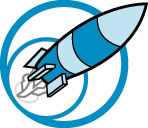Element Print
My element is Tungsten, or Wolfram as it is sometimes called. Its atomic number is 74. Tungsten has the highest melting point and boiling point of all the elements that have been found. It is a transition metal. My element was found in 1783 by two brothers in Spain. They found it when they isolated it from acid. Tungsten can be used for a lot of stuff from military weapons to lights bulbs and x-ray tubes.
I got the idea to do a cello because I learned that Tungsten is used for one of the strings on the cello. The C string on most cellos are made with Tungsten. Because Tungsten is so dense, it gives the C string extra projection. Since this is a less known use, I decided to do that.
First, I sketched out what my cello would look like in my art sketchbook. Then I traced it onto the tracing paper Ms. Hull gave us. After that I traced it onto styrofoam. From there, I painted it and put the image onto paper.
If I was to do this project again I would have a more interesting texture in the back and I would try to indent more so the image is clearer.
The part of the project that I enjoyed most was painting the styrofoam and putting onto the paper with a wooden spoon. I enjoyed this because it was fun and gave me a better understanding of negative space.
